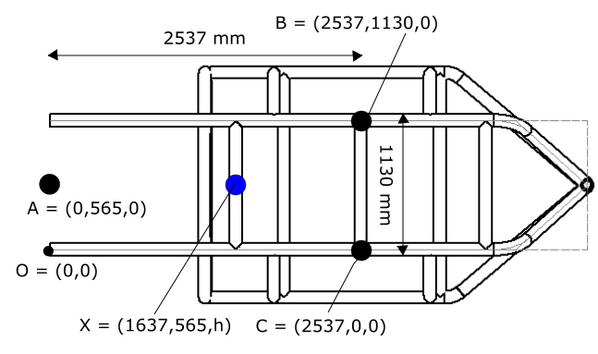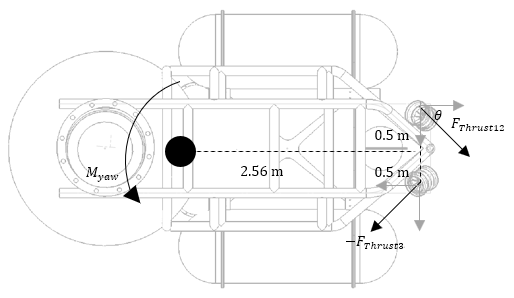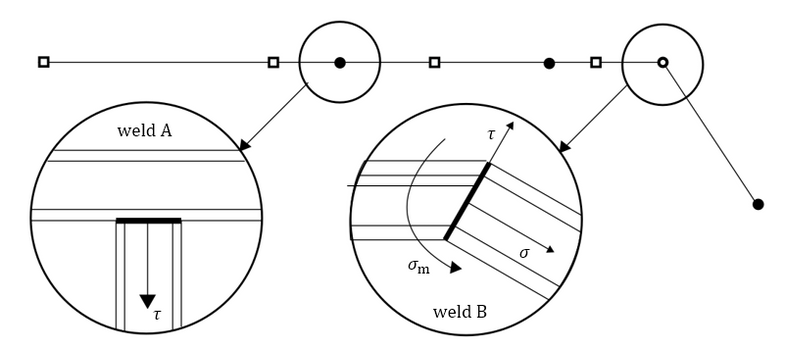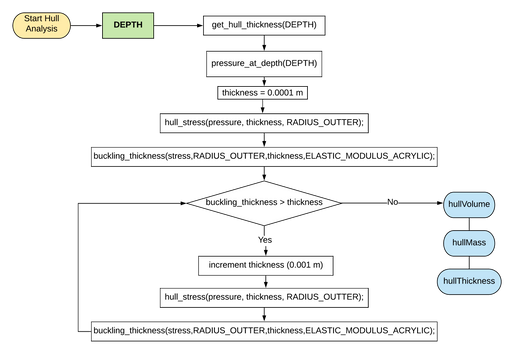CAPSTONE Project: Submarine Hull Design
The final design incorporates all of the requirements as laid out in the mandate. All standards fall in line with the DNV-GL guidelines. In order to have a fully op-erational submarine, an integrated ballast system designed by SUB1B, was implemented with the design. The proposed design offers customers a versatile vessel capable of commercial, ocean science, tourism, media and thereby falls in line with what the partner
Aquatica Submarines is looking for in the parametric design. Note, the design has gold plating to fit in the high end superyacht market, however is designed with using SS 2205
Literature Review and Mandate
The submarine can travel up to 6 knots, submerge to a depth of 1000m, seats two passengers and contains all auxiliary systems. The footprint of the design was kept as small as
possible to allow for ease of shipping. All components are easily removable to allow for quick and painless maintenance. Subsystems were designed and verified through analysis for the highest standards of safety. Customers can input their desired parameterizations and a custom tailored submarine design will be output. Excess cargo and internal frame space is still available to allow customers to add a variety of accessories based on the
submarine needs. Further safety considerations were met by implementing a drop weight and release buoy system.
Other information provided included Basing Designs from Aquatica Subamrines.
Concept Report
The following is a concept design report concerning the design of a submarine hull. It covers three full design possibilities, weighs the pros of their individual subsystems, and results in one final design which uses the best of each. This is the second deliverable of the SUB2A capstone project group.
Criteria Included:
-
Safety
-
Reliability
-
Cost
-
Maintenance
-
Complexity
-
Corrosion
-
Size/Weight
-
Ease of Operation
-
Field of View Optimization
Design Dossier
Unofficial document submitted finalizing the designs that the team will go forward with. Once decided on from the Concept review it was my task to create the technical drawings and bring up potential design issues or considerations to make that occurred to me while designing.
Note that not all the designs remained unchanged, modifications were made for various reasons however all were verified to ensure their safe use.
Modelling Report
The following is the modelling report from the SUB2A capstone group. It details preliminary findings of forces, kinematics, and other calculations. This is the groups third deliverable, following the concept report.
Based on feedback from the professor we took the modelling report and expanded on it to create the Analysis Report in which all design decisions would be properly engineered solutions.
Analysis Report
Once the design was decided on the appropriate analysis was carried out to ensure that there would be no failure due to stresses and deflections. This analysis was split off due to the volume of components to consider.
I had focused on the analysis of Lift Points (Submarine Deploy and Recovery), Thrusters, Frame (Loading Scenarios and FEA), Stability of Submarine (Centre of Gravity and Centre of Buoyancy). In order to work effectively as a team we shared results with one another and therefore contributed to nearly all aspects of the design.
Capstone Report
The higher level design consists of a clear acrylic hull attached to a frame which houses majority of the mechanical components. These components include: Hull, Hatch, Frame,
Hull, Control Panel and UI, Pressure Hull Penetrators, Release Buoy mechanism, Ballast, Batteries, Cargo Space, Thrusters, Lift Points, and Lights. These designs can be seen in the first slider gallery.
Note that the Parameterization is what I was tasked with. In relating the analysis into variables that will go through MATlab to then change variables in Solidworks. It was important to ensure the correct calculations and conditions are stated to ensure a safe design is produced.















































































